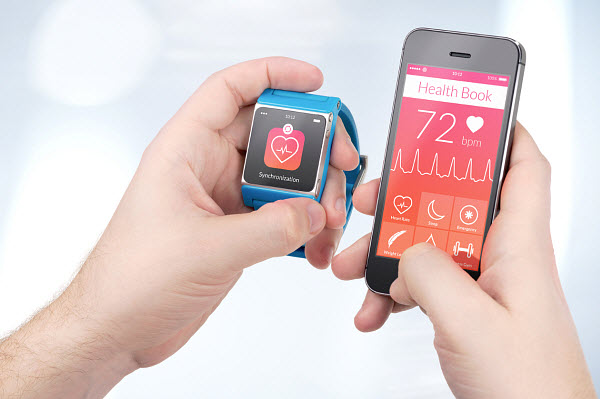Wearable devices are becoming more than just entertainment tools
When it comes to wearable technology, many people immediately associate this concept with entertainment or social networking in some way. Many wearable devices that are slated for release in the coming months and years are, indeed, designed with entertainment in mind, but not all technology is meant to be fun. A recent breakthrough in wireless technology could actually make wearable devices very important tools for those that are interested in managing their health and wellbeing.
A team of researchers from Stanford University have developed a new wireless charging technology called “mid-field wireless transfer.” This technique is capable of delivering electrical power to small devices, such as biometric sensors, pacemakers, nerve stimulators, and wearable devices that monitor health. Moreover, the technique can actually be used to power devices that are imbedded deep within the human body, making implanted sensors and other such devices viable for health care.
 The research team notes that its wireless energy transfer technique is so safe that it can be used to power devices embedded in livers, kidneys, hearts, and even brains. These devices can be used to simply monitor health information, such as the performance of kidney functions, or they can be used to treat serious illnesses or alleviate pain. These devices could also be less of a burden on their owners, as they would not require surgery to replace the batteries that are commonly used for current implanted devices.
The research team notes that its wireless energy transfer technique is so safe that it can be used to power devices embedded in livers, kidneys, hearts, and even brains. These devices can be used to simply monitor health information, such as the performance of kidney functions, or they can be used to treat serious illnesses or alleviate pain. These devices could also be less of a burden on their owners, as they would not require surgery to replace the batteries that are commonly used for current implanted devices.
Wearable technology is most often construed with entertainment because that is how many modern devices are developed. These devices may be serving as a stepping stone to a future where technology is a more fundamental part of human life than it already is, however. Wearable technology could lead the way to a new generation of integrated technology that could actually change the way people see and interact with the world around them in a way that is more profound than what can be achieved through a simple pair of augmented reality glasses.
This, according to the CEO at Intel who spoke at the Maker’s Faire.
Brian Krzanich, the chief executive officer of Intel Corp, spoke at the Maker’s Faire in San Mateo, California, spoke about wearable technology at the annual event and said that the chipmaker giant is looking to individual inventors for the next big discovery in wearables, particularly in the area of smart clothing.
As smartphone sales start reduce in acceleration, wearables may increase in importance.
Intel feels that wearable technology based computing devices – which is a broad category that takes in a range of different kinds of mobile gadget such as smartwatches, fitness trackers, augmented reality glasses, smart clothing, and other types of tech – may become the next large personal computing trend. However, despite the fact that this year is supposed to be the year of wearables, the products that have already launched, such as fitness bands and smartwatches, have yet to truly take off. This, despite the large brand names attached to them, such as Samsung.
Krzanich feels that the best wearable technology innovations will come from individual inventors.
He stated that it will likely come in the form of smart clothes and that it will be these individual inventors who will be paying attention to their own needs and will, therefore, be more aware of what the consumer is actually seeking. It will be these individuals who will detect the true problem and find the solution for consumers considering the purchase of wearables.
Krzanich stated that “The trick to making the perfect wearable is going to be when you figure out what problems you’re trying to solve, and I don’t think you’re going to be able to build a wearable that does it all for everyone.” He then added “Who better to design the next athletic wearable than an athlete?”
The San Mateo open air event was attended by thousands of people, giving attendees the opportunity to find out what is happening in wearable technology at the moment and to discover what developments have come about. Everything from flying drone demos to voice activated robots were being shown, that day.
 The research team notes that its wireless energy transfer technique is so safe that it can be used to power devices embedded in livers, kidneys, hearts, and even brains. These devices can be used to simply monitor health information, such as the performance of kidney functions, or they can be used to treat serious illnesses or alleviate pain. These devices could also be less of a burden on their owners, as they would not require surgery to replace the batteries that are commonly used for current implanted devices.
The research team notes that its wireless energy transfer technique is so safe that it can be used to power devices embedded in livers, kidneys, hearts, and even brains. These devices can be used to simply monitor health information, such as the performance of kidney functions, or they can be used to treat serious illnesses or alleviate pain. These devices could also be less of a burden on their owners, as they would not require surgery to replace the batteries that are commonly used for current implanted devices.

